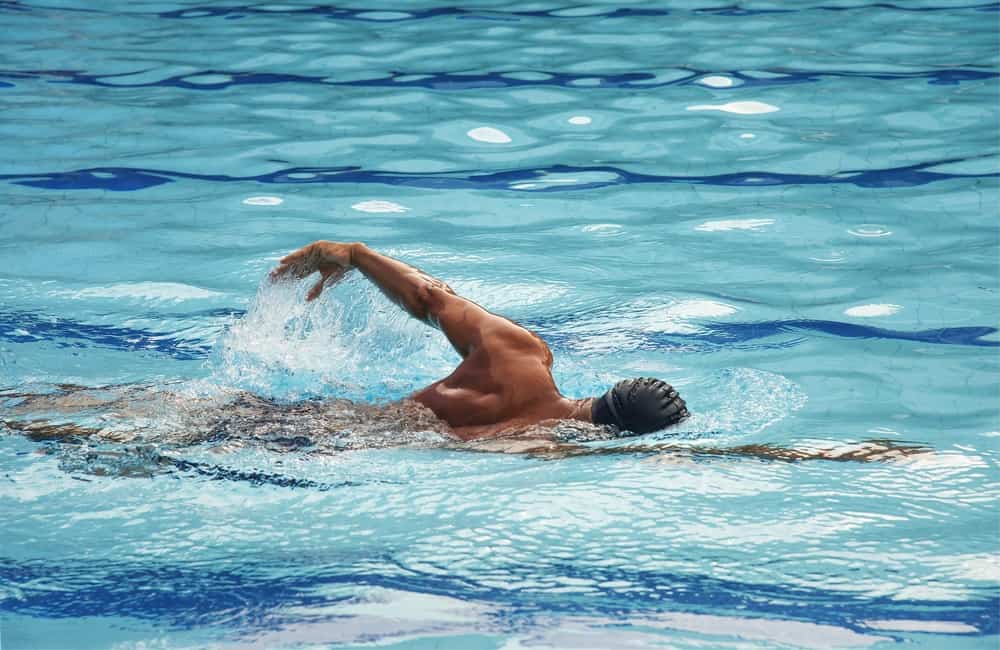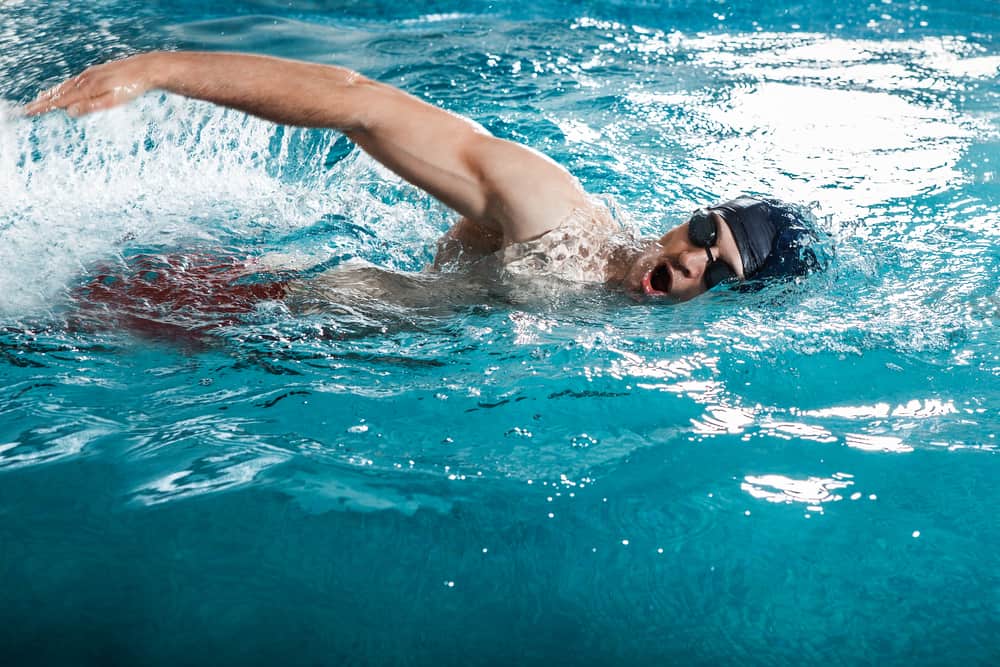There are many different types of swimming, but freestyle is the most popular. We will discuss the primary muscles used in freestyle swimming and how they work together to help you swim. We will also discuss the benefits of using these muscles and how you can train them to improve your swimming performance.
The main muscles used in freestyle swimming are :

- The pectorals are the muscles on the front of your chest. They help you lift your arms out of the water and propel you forward.
- The latissimus dorsi are the large muscles on your back that help you extend your arms and pull yourself through the water.
- The deltoids are the muscles on your shoulders that help you rotate your arms and maintain a firm grip on the pool wall.
All of these muscles work together to create a powerful swimming stroke. When they are all contracted simultaneously, they create a wave of muscle activity that propels you forward through the water. This muscle activity also helps to lift you out of the water and reduce drag resistance. Training these muscles can help improve your swimming performance by allowing you to swim faster and more efficiently.
One of the main challenges people have with freestyle swimming is knowing which muscles to use. Many people try to use too many powers at once, which can lead to inefficient swimming and reduced speed. Another common challenge is the lack of strength and endurance in these muscles. Without proper training, these muscles can quickly fatigue and cause you to slow down.
Table of Contents
What are some of the benefits of using these muscles?
The muscles used in freestyle swimming are some of the most critical muscles in the body. They play a crucial role in providing many benefits, including:

- increased endurance
- improved cardiovascular health
- strengthened immune system
- better joint health
- increased metabolic rate
- improved respiration
How can you train these muscles to improve your swimming performance?
If you want to swim faster and more efficiently, you need to train these muscles. There are a variety of exercises that you can do to target each muscle group. For example, you can do bench and shoulder presses to work your pectorals and deltoids. You can also do bicep curls and tricep extensions to work your biceps and triceps. And finally, you can do crunches and sit-ups to work your abdominal muscles.

By training these muscles, you’ll be able to swim faster and more efficiently. Swimming is a great way to stay in shape and improve overall health. It’s also a great sport for athletes who want to improve their performance in other sports.
What is the risk you will face by using these muscles too much?
The muscles used in freestyle swimming are essential because they provide power and speed. They can be strengthened with exercise, which can improve your swimming performance. However, you should be aware of the risks you will face if you use them too much. These muscles are susceptible to injury, so you should take a break now and then to prevent any problems.
Is swimming more tiring than running?

Both swimming and running are excellent exercises for overall fitness, but they have different effects on the body. Swimming is more tiring than running because it uses more muscle groups and requires more energy to move through water than air. So if you’re looking to torch some calories, swimming is the way. What to eat after swimming?
What to eat after swimming?
Eating the right things after swimming is essential, as it can help your body recover and refuel. Swimming is a great exercise, but it can be tiring. After a long swim, the last thing you want to do is worry about what to eat. But eating the right things after swimming is essential, as it can help your body recover and refuel. Here are some tips for what to eat after swimming-from light snacks to full meals.

- Fruit: Fruits are a great source of natural sugars and vitamins, which can help to restore energy levels. Try eating a banana, an apple, or a handful of berries after swimming.
- Yogurt: Yogurt is a good source of protein that can help rebuild muscles. It is also a good calcium source, essential for bone health. Try to choose yogurt with live cultures, as these can help to boost the immune system.
- Energy bars: If you are looking for a quick and easy snack, energy bars can be a good option. Look for bars that contain complex carbohydrates and protein, as these will help to replenish energy levels and rebuild muscles.
- Smoothie: A smoothie is a quick and easy way to get a nutrient-rich snack. Try blending fruits, yogurt, and milk or juice. You can also add in a source of protein, such as bananas, peanut butter, or protein powder.
- Crackers and cheese: Crackers and cheese are a good source of protein and fat, which can help keep you satisfied. Choose whole-grain crackers and low-fat cheese for the healthiest option.
- Trail mix: Trail mix is an excellent option if you want something to eat on the go. Look for a mix containing various nuts, seeds, and dried fruits.
- Vegetables and dip: Vegetables are a great source of vitamins and minerals and can also be satisfying. Try dipping them in a healthy dip, such as hummus or tzatziki sauce.
- Hard-boiled egg: A hard-boiled egg is a good source of protein and can help replenish energy levels. Add a hard-boiled egg to a salad or sandwich for a quick and easy meal.
